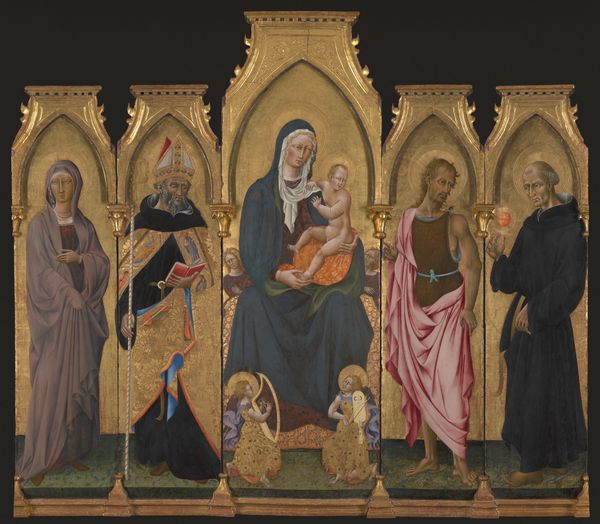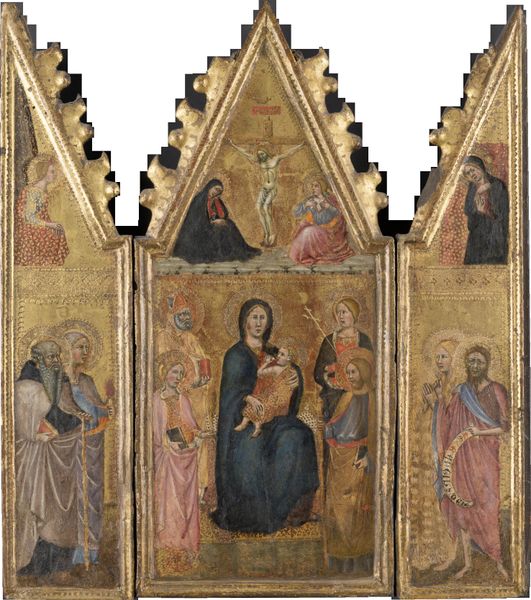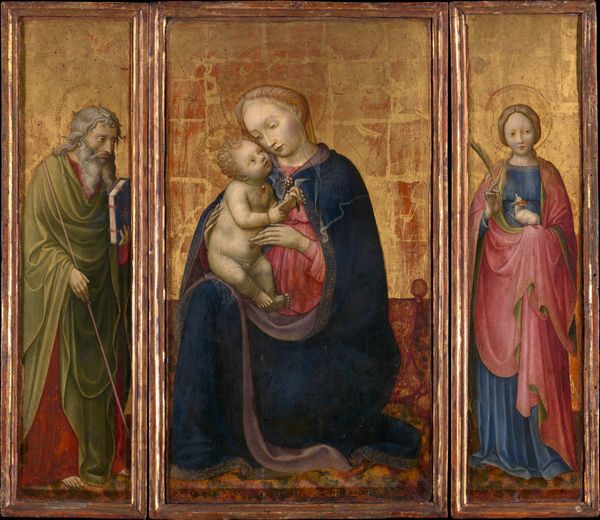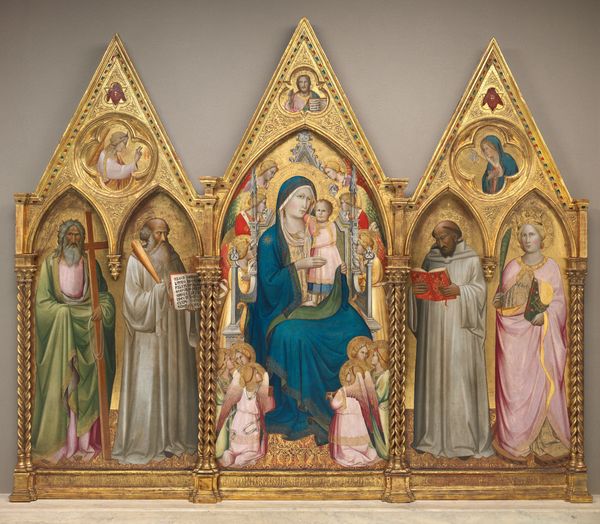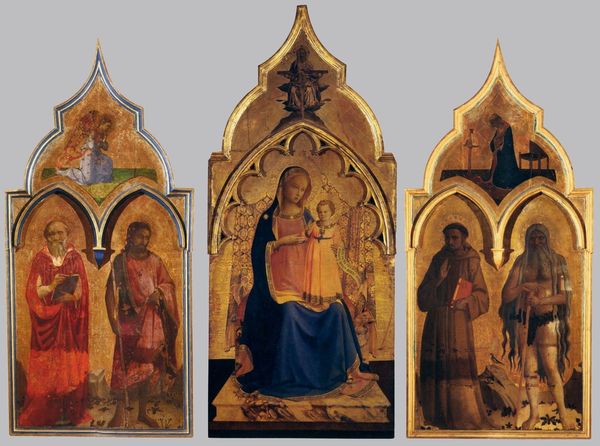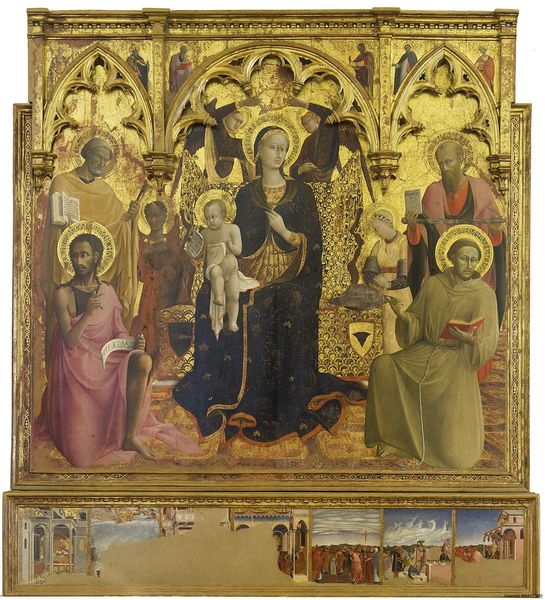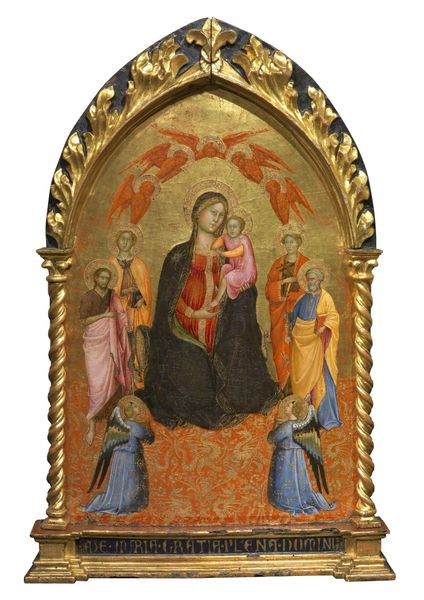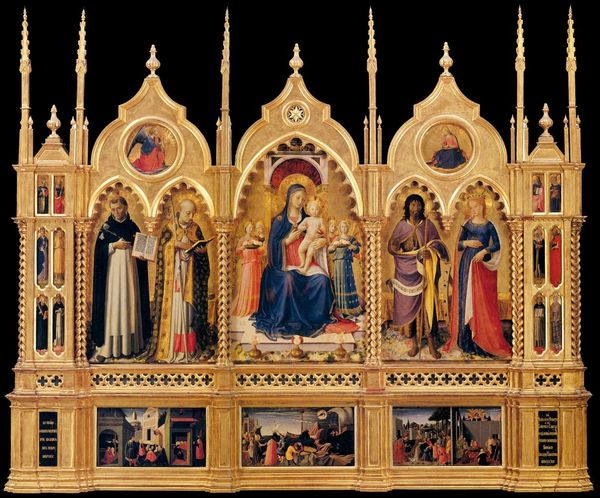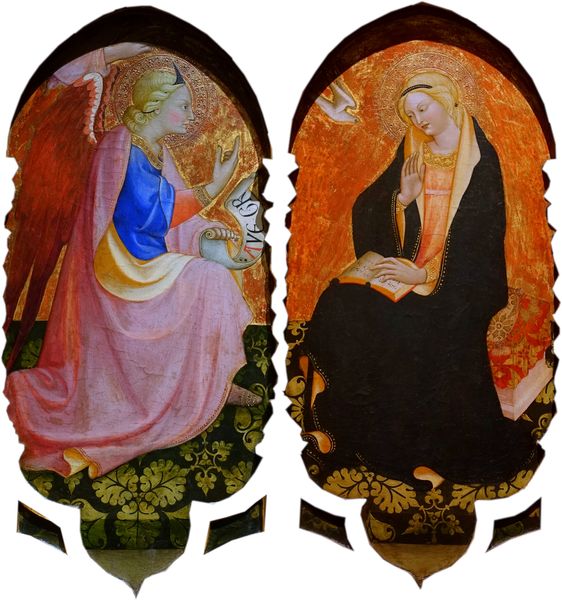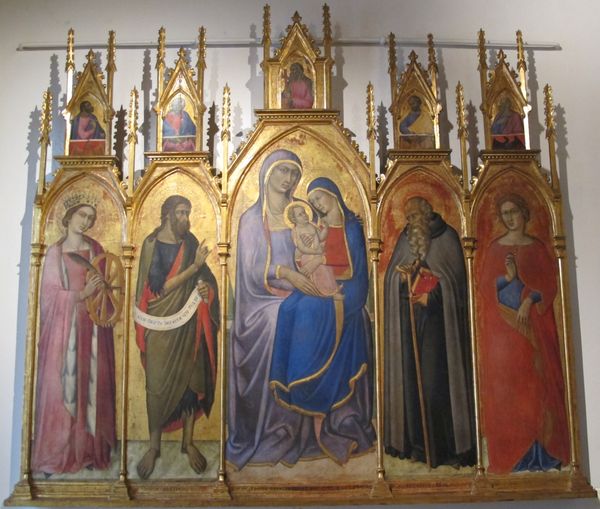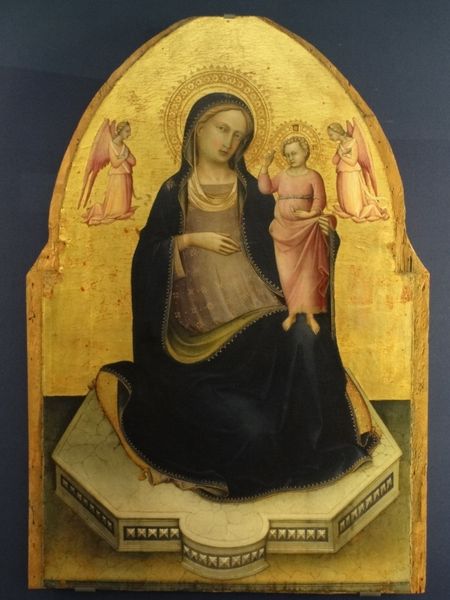
Annunciation Dyptic 1420
0:00
0:00
alvaropiresdeevora
National Gallery of Umbria (Palazzo dei Priori), Perugia, Italy
panel, tempera, painting
#
portrait
#
panel
#
narrative-art
#
tempera
#
painting
#
sculpture
#
figuration
#
traditional architecture
#
oil painting
#
academic-art
#
italian-renaissance
#
miniature
Dimensions: 65 x 35 cm
Copyright: Public domain
Editor: Here we have Álvaro Pires de Évora's "Annunciation Diptych," created around 1420, using tempera on panel. I find the formality of the setting quite striking, almost theatrical. How should we consider the significance of its materials? Curator: A key starting point is the actual process of creation. Tempera wasn't a quick medium; it required careful layering. Consider the lapis lazuli, ground to create ultramarine – a pigment historically as valuable as gold. What does that inherent material value contribute to the narrative of divine importance? Editor: So the labor and inherent worth of the materials are as vital to the "annunciation" as the figures themselves? Curator: Precisely. These expensive pigments weren't chosen arbitrarily. It highlights the economic power behind the commission, possibly signaling the patron's status, and also directs focus to the divine narrative represented. Editor: That reframes how I view it entirely! Is there also any specific link between these panels' materiality and the rise of the Italian Renaissance style? Curator: The materials employed tie into the artistic climate, including their acquisition and treatment, alongside the cultural investment into the religious scene portrayed. Tempera panels, by this stage, represent both continuity with established traditions, and experimentation towards an increased visual naturalism, facilitated in time through changing relationships with pigment and process. Editor: It's amazing to think about how materials, production, and power converge in these panels, it gives them a new significance. Curator: Exactly! Examining the physical components and the circumstances of creation makes it clear that art’s message transcends mere imagery; its worth and intent are molded by cultural values.
Comments
No comments
Be the first to comment and join the conversation on the ultimate creative platform.
